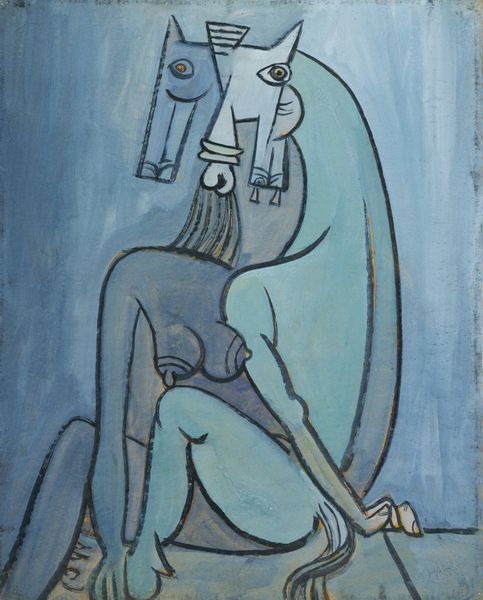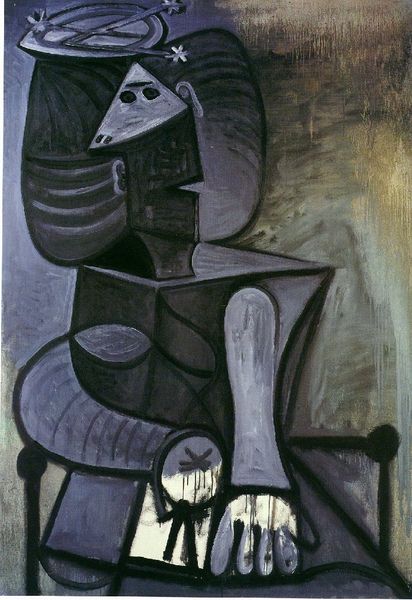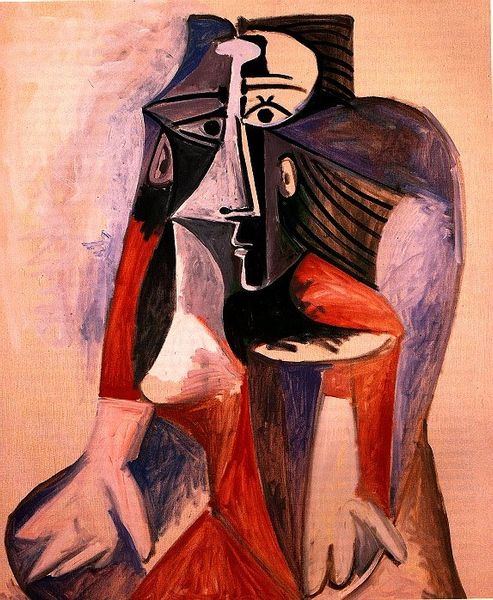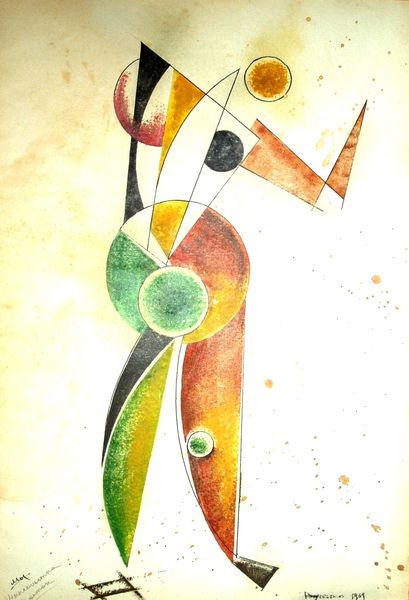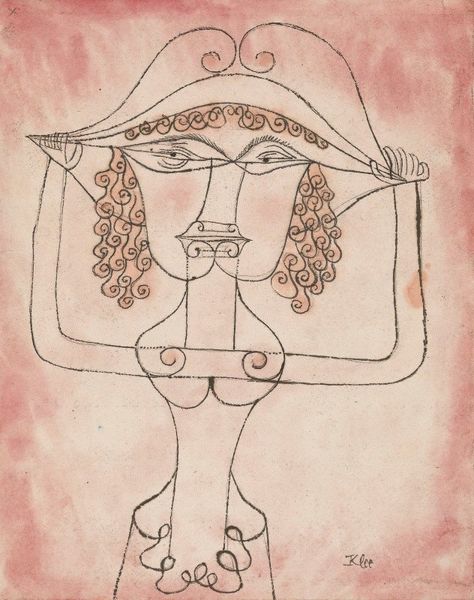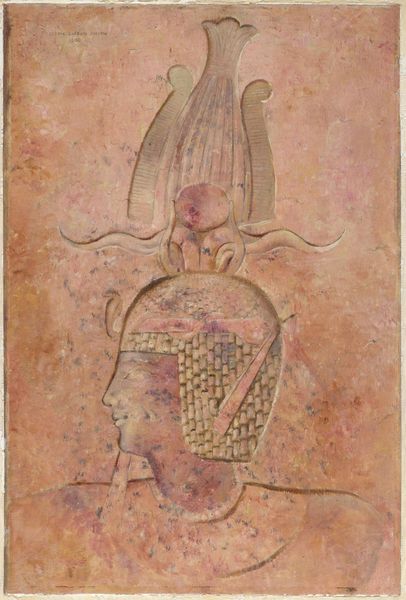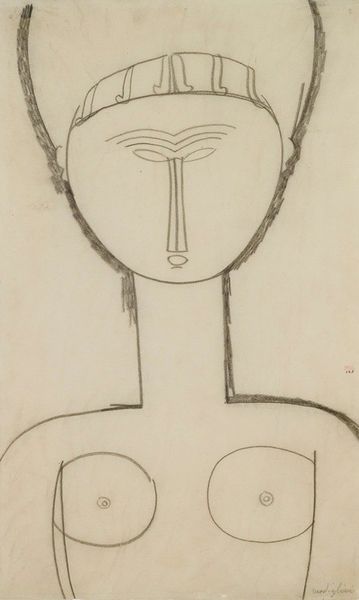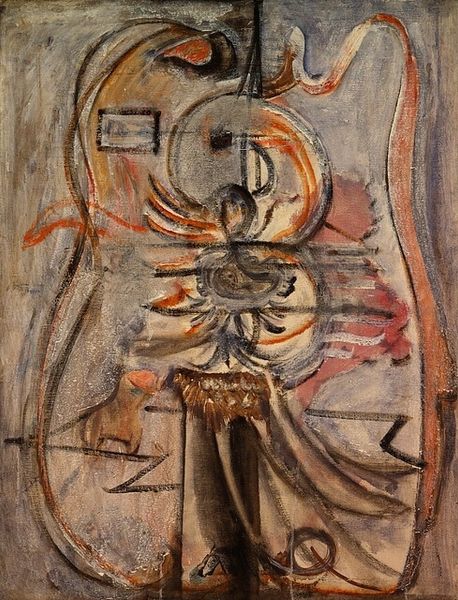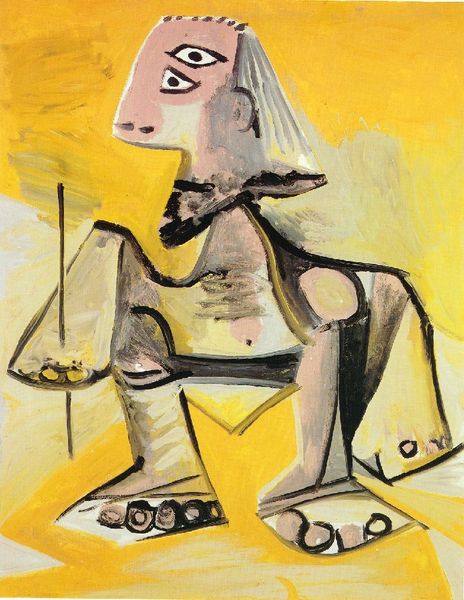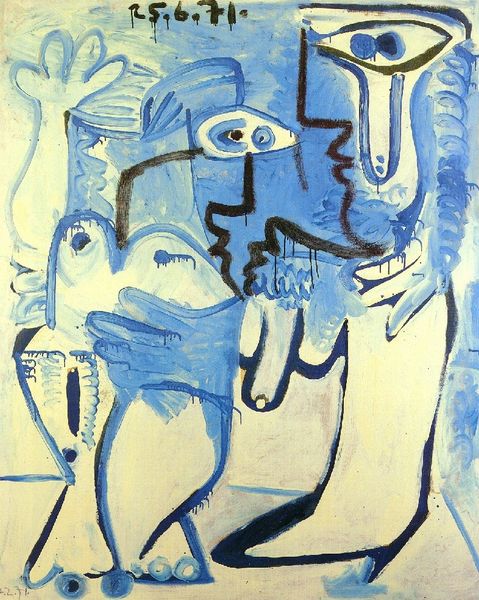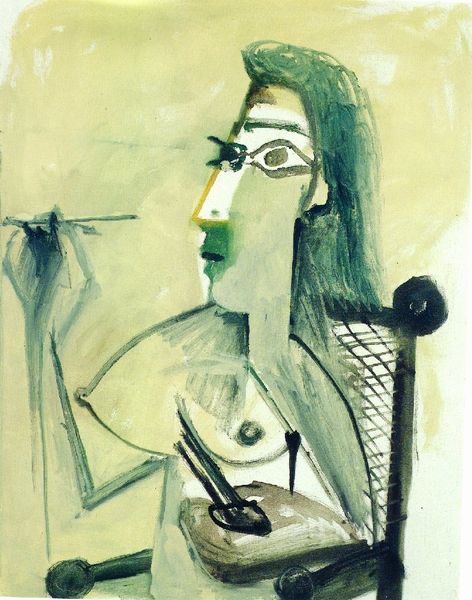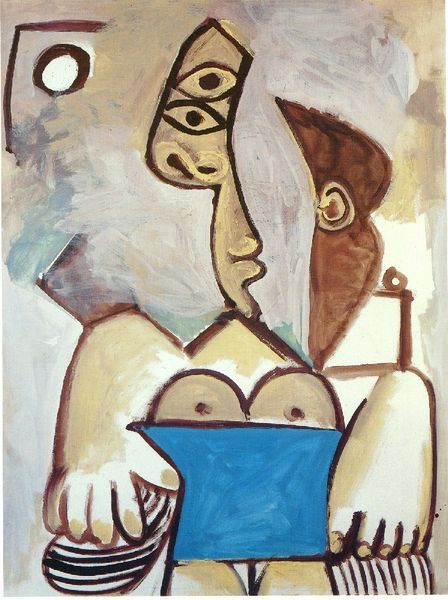
mixed-media, painting, watercolor
#
portrait
#
cubism
#
mixed-media
#
ink painting
#
painting
#
figuration
#
form
#
watercolor
#
coloured pencil
#
line
#
surrealism
#
modernism
Copyright: Wifredo Lam,Fair Use
Editor: So this is Wifredo Lam's "Femme Cheval" from 1943, done in mixed media. The blending of human and animal form is striking, and it has a somewhat unsettling quality. What strikes you about it? Curator: Immediately, the hybridity in materials—watercolor, ink, colored pencil—points to Lam's rejection of rigid artistic categories. It mirrors the hybridity of the subject matter itself. Consider the historical context: this was made during World War II. Editor: How might that wartime context influence his artistic choices? Curator: The mixed media could be interpreted as a comment on resource scarcity during wartime, a necessity turned into artistic ingenuity. Lam, living in exile, was perhaps repurposing readily available materials rather than relying on traditional, expensive ones. Notice, also, how line and form intersect, defying expectations. It brings together modernist form and the materials themselves, like a collage on labor and cultural expectation. Editor: It almost feels as though he is protesting traditional, Western materials. Do you think that's right? Curator: Protest, or perhaps a reclaiming. Think of it: Lam was influenced by both European Modernism *and* his Afro-Cuban heritage. These inexpensive materials—ink, pencil, watercolor—may signify a conscious return to more readily available, perhaps even more culturally significant, resources. Editor: So it is less about *what* is represented but how it is made, echoing class and colonial history. I hadn’t thought about it like that before. Curator: Exactly. This work shows us the inextricable link between the artist's hand, the available resources, and the powerful messages art can carry. We are reminded to question art's very foundation, not just its surface.
Comments
No comments
Be the first to comment and join the conversation on the ultimate creative platform.
